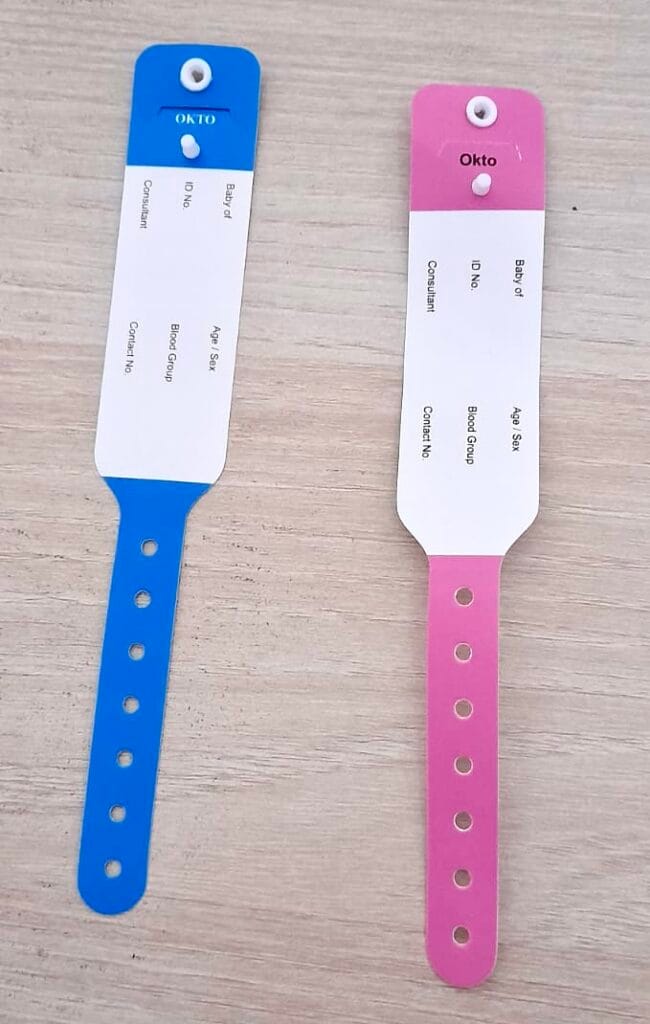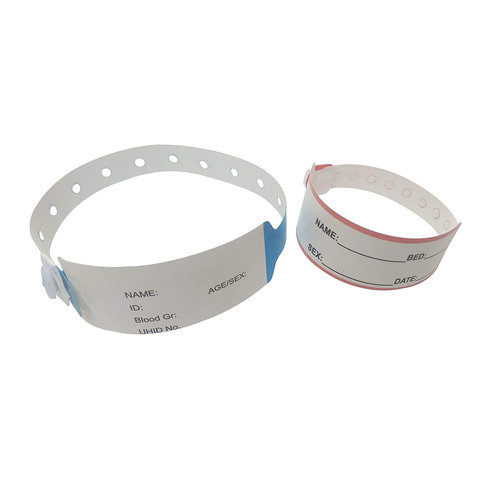Enhancing Security: The Importance of Patient Recognition Bands in Health Care
In the world of health care, the effectiveness of patient identification bands can not be overstated, as they serve as a fundamental protect against misidentification and subsequent mistakes. As we explore the multifaceted role of these bands, it becomes evident that their importance expands past plain recognition, increasing concerns about best practices and future innovations in patient safety and security.
Overview of Individual Recognition Bands
Client identification bands play an important function in guaranteeing the safety and precision of patient treatment in health care settings. These bands, typically endured the wrist or ankle joint, function as a critical device for validating individual identity, therefore lessening the danger of mistakes in therapy, medication administration, and other health care procedures. Made from sturdy products, individual identification bands usually consist of important details such as the individual's name, day of birth, medical document number, and barcodes or QR codes for scanning.
The application of patient recognition bands is important in numerous healthcare settings, including hospitals, outpatient facilities, and long-term treatment institutions. They add to a systematic technique in patient administration, enabling health care professionals to quickly and precisely recognize clients, particularly in high-pressure situations where quick decision-making is essential.
Additionally, the usage of these bands is straightened with regulatory standards focused on boosting patient safety - Patient Identification Band. By guaranteeing that each individual's details is easily verifiable and readily available, doctor can keep a high criterion of treatment, lower the occurrence of adverse events, and foster a society of safety and security within medical care establishments
Advantages of Accurate Recognition
Precise recognition is basic to enhancing patient safety and care top quality in medical care setups. It functions as the very first line of defense against errors that can bring about damaging individual results. By making sure that each client is correctly identified through dependable methods, such as individual identification bands, healthcare service providers can significantly decrease the threat of misidentification, which can cause unsuitable therapies, medicine errors, and also surgical mix-ups.
Moreover, exact person identification facilitates reliable communication amongst health care teams. When all personnel can continually determine patients, they can share essential info more successfully, resulting in much better coordination of treatment. This is specifically crucial in emergency situation circumstances where prompt interventions are critical.
In addition, accurate recognition supports compliance with governing standards, therefore reducing the danger of lawful consequences for medical care centers. It cultivates count on in between people and healthcare providers, as people feel much more safe and secure knowing that their identities are being guarded.

Usual Obstacles Dealt With
Making certain efficient person identification in medical care settings offers a variety of obstacles that can compromise safety and care quality. Patients might arrive in a state of complication or distress, making precise recognition tough.
An additional challenge is the reliance on human elements in identification treatments. Healthcare experts might unintentionally misinterpret link or ignore recognition methods, specifically in high-stress settings such as emergency situation departments. This can cause mistakes, including the administration of inaccurate therapies or drugs.
Technical issues also position obstacles. Electronic health document (EHR) systems are made to enhance individual recognition, system blackouts or user mistakes can interrupt the procedure. The physical design of patient ID bands can lead to readability issues, specifically in instances where bands are harmed or obscured.
Finally, inconsistent training among staff regarding recognition methods can cause spaces in understanding and practice. Addressing these obstacles is important for enhancing client safety and making sure that identification bands offer their desired function efficiently.
Finest Practices for Application
To properly apply client identification bands in health care settings, companies need to adopt a complex technique that prioritizes technology, training, and standardization assimilation. Standardization involves developing clear protocols for the layout, application, and use of identification bands throughout all departments. This ensures consistency and decreases the danger of mistakes linked to differences in band types or classifying techniques.


Training is essential for all medical care personnel to ensure they understand the significance of precise client identification, exactly how to properly review and use identification bands, and visit this web-site the treatments to adhere to in instance of inconsistencies. Normal workshops and correspondence course can enhance this knowledge and advertise a culture of safety and security.
Innovation assimilation plays a pivotal duty in improving the effectiveness of person recognition bands. Making use of barcode scanning or RFID innovation can simplify the identification procedure, permitting real-time confirmation of client identifications. Additionally, digital wellness document systems must be set up to consist of notifies for inequalities between the identification band and person data.
Future Trends in Individual Safety And Security
As health care proceeds to evolve, the focus on person safety is likely to heighten, driven by improvements in modern technology and a greater understanding of systemic dangers. Arising fads indicate a shift in the direction of more incorporated systems that leverage data analytics, man-made knowledge, and machine knowing to improve patient recognition procedures. These modern technologies can help identify prospective security problems prior to they rise, therefore reducing errors connected with misidentification.
Additionally, the execution of blockchain technology may reinvent how patient data is securely shared among doctor, making certain that identification bands are up-to-date and consistently exact. This will certainly not just improve individual safety but also help with seamless interaction throughout multidisciplinary teams.

Additionally, the growing focus on individualized medication is expected to influence client safety and security protocols. By incorporating genetic and market details right into recognition systems, medical care professionals can tailor treatments extra effectively, reducing the threats of unfavorable responses because of misidentification.
Verdict
To conclude, person identification bands function as an essential element in enhancing security within medical care environments. By helping with exact client identification, these bands considerably decrease the danger of errors connected with misidentification, inappropriate therapies, and drug management. In spite of difficulties in application, adherence to finest practices and the integration of arising modern technologies can better improve their efficiency. Eventually, the ongoing focus on durable recognition methods will certainly contribute to improved patient end results and general security in medical care setups.
In the world of healthcare, the efficiency of person recognition bands anonymous can not be overemphasized, as they serve as a basic protect against misidentification and subsequent mistakes.Patient recognition bands play a vital function in guaranteeing the safety and precision of person care in health care setups. Made from resilient products, client recognition bands often include essential details such as the client's name, day of birth, clinical record number, and barcodes or QR codes for scanning.
By making certain that each client is appropriately identified with trusted ways, such as patient identification bands, medical care service providers can dramatically minimize the danger of misidentification, which can lead to unacceptable treatments, medication errors, and also medical mix-ups.
In verdict, client identification bands serve as a crucial part in enhancing safety within health care settings. Patient Identification Band.